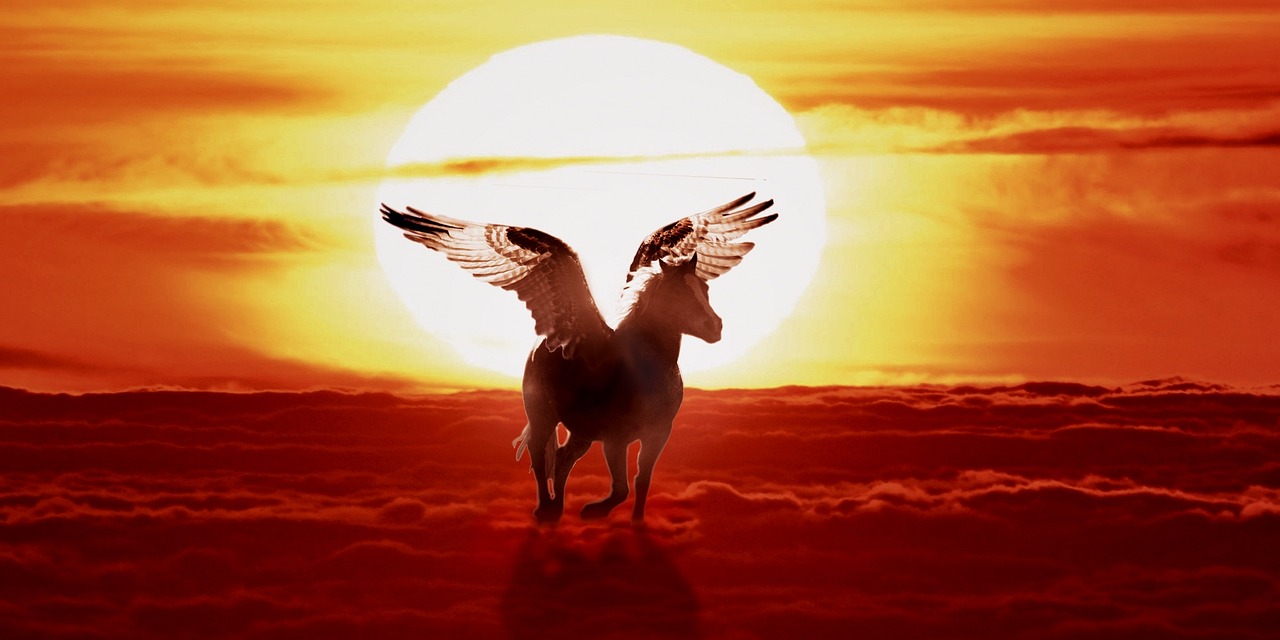Pegasus: The Winged Horse of Greek Mythology
Pegasus, known as Pêgasos in Greek, is a legendary winged horse that originated from the beheaded Gorgon Medousa (Medusa). His remarkable entrance into mythology occurred when the hero Perseus severed Medousa’s head, from which Pegasus and his brother Chrysaor emerged. Bellerophon, a Greek hero, succeeded in taming Pegasus, and they fought against the monstrous Chimera together. Though Bellerophon attempted to ascend to the heavens upon Pegasus, Zeus intervened, causing the horse to throw him back down to earth, resulting in Bellerophon’s disgrace.
Pegasus then soared to Mount Olympus, where he served as a thunderbolt bearer for Zeus. His legacy remains in the stars, where he is immortalized as a constellation, indicating the arrival of spring and associated with the thunderstorms that follow.
The name Pegasus is believed to denote “of the spring,” derived from the Greek term pêgê, symbolizing the horse’s association with various springs, or it can mean “sprung forth,” alluding to his miraculous birth from the Gorgon.
Family Tree of Pegasus
- Parents: Poseidon and Medousa
- Siblings: Chrysaor
Historical References to Pegasus
The account of Pegasus’s birth is recorded by various ancient sources. Hesiod narrates that upon Perseus cutting Medousa’s head, Pegasus and Chrysaor sprang forth from her blood. Other writers like Pseudo-Apollodorus, Strabo, and Ovid also recount similar tales, underlining Pegasus as a creation of Poseidon and Medousa, often with emphasis on his association with springs and celestial bodies.
Pegasus’s Connection to the Muses
In later mythology, Pegasus became associated with the Muses. In ancient lore, Pegasus kicked the ground, which led to the emergence of the divine spring Hippocrene on Mount Helicon. This spring was said to bestow inspiration to poets and artists alike, emphasizing Pegasus’s role as a creature linked not only to battles but also to the arts.
Bellerophon, Pegasus, and the Chimera
Bellerophon’s journey to tame Pegasus began when he sought the help of Athena in a dream, where she provided him with a golden bridle to capture the horse. After capturing Pegasus at the well Peirene, he rode him to defeat the fearsome Chimera. Although he tasted fame and glory after slaying the beast, his arrogance led to a fall from grace when he attempted to join the gods in heaven, from which he was cast down by Pegasus.
Pegasus continued to thrive, ascending to the heavens where he resides among the stars. His profound legacy is marked by a variety of art forms, depicting him alongside figures like Bellerophon and Athena.
The Celestial Pegasus
Pegasus’s connection to the sky is immortalized in astronomy. As the constellation Pegasus, he captures the imagination of those who gaze upon the night sky. Poets and artists have rendered him in numerous works, celebrating his beauty and the tales of his exploits alongside heroes.
The Pegasi
Winged horses or Pegasoi hold an enchanting place in mythology, envisioned as noble creatures that drew the chariots of gods. They symbolize grace and divine connection, further enriched by stories of other winged steeds like those gifted to the hero Pelops by Poseidon.
The figure of Pegasus transcends ancient stories, influencing various cultural artistic expressions, affirming his enduring legacy as a powerful and mythical presence in Greek mythology.



